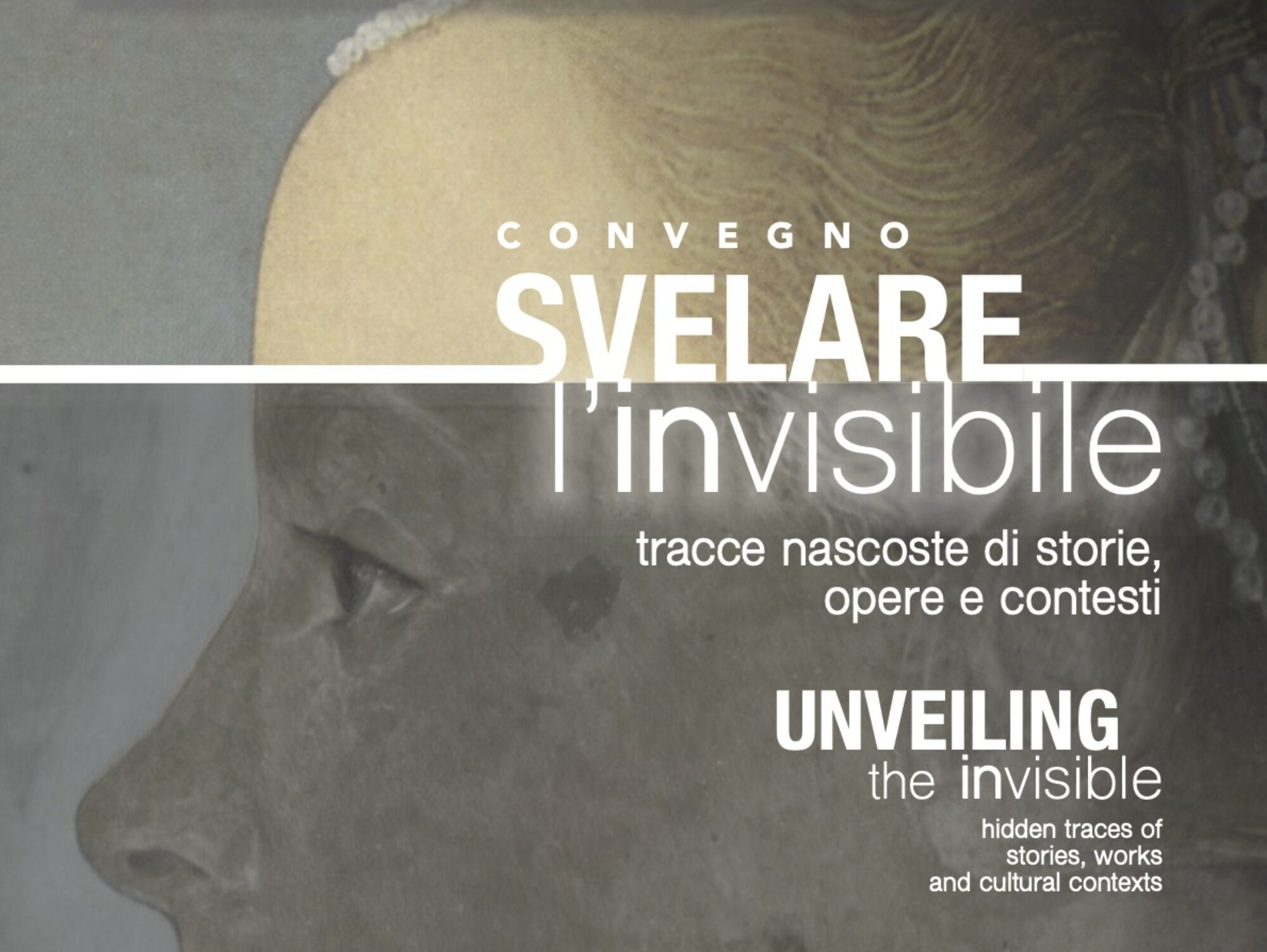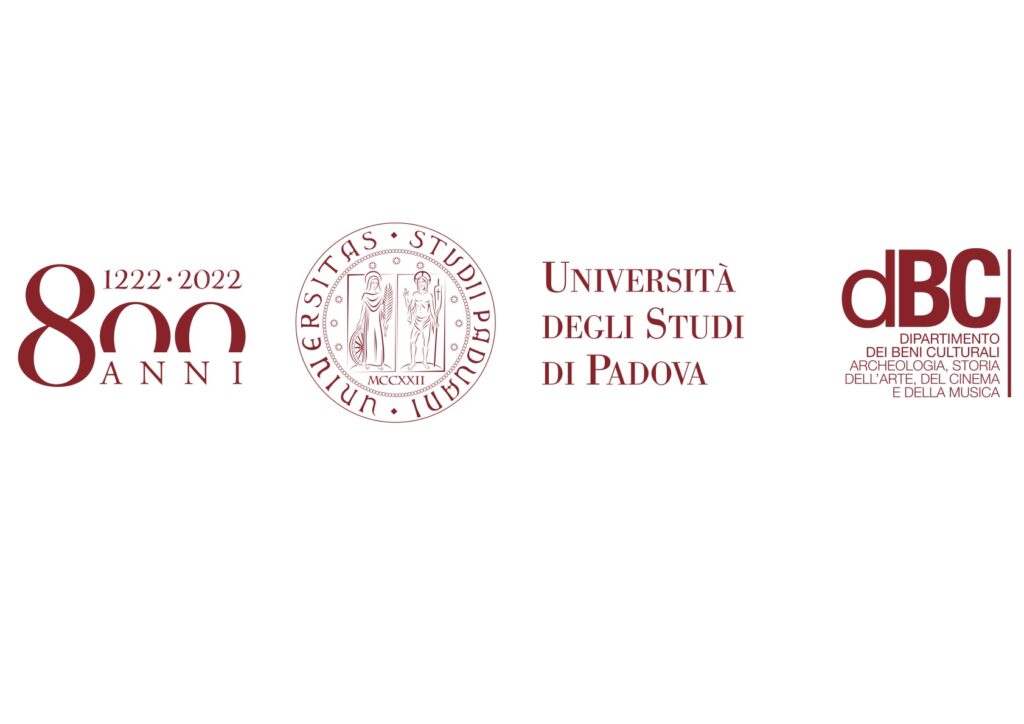Beyond the surface: survey technologies and execution practices
Francesca Daniele, Fiorenza Redi (Università degli Studi di Padova)
For a possible history of atramentum
The term atramentum probably derives from the Latin Āter, black, and appears in a passage of Pliny the Elder’s Naturalis Historia which describes Apelles’ practice of finishing his works with a dark varnish to protect the painting from dust and dirt and to make it so that “the splendor of the colors did not offend the sight”. The medium of the mythical painter was widely known in the Renaissance thanks to Pliny’s many editions and paraphrases, but little else is known about its actual application: successive varnishes are but a possible interpretation of what was used at the time, since the original recipe has been lost to time. The usage of finishing paints is not easy to investigate also due to the difficulty of knowing the chemical composition of the original materials, of which almost no trace is found nowadays due to the continuous tampering and restorations that have occurred on the paintings over the centuries. The comparative study of documentary and scientific investigations, however, proved fruitful to the reconstruction of a possible history of this now invisible paint. Correlating the analysis of sources and textual documents that, in various forms, have left a trace of this aesthetic experience and the data emerged from the scientific research carried out in recent years in laboratories on the constituent materials of some works, we will understand if, and to what extent, Renaissance artists, and in particular the colorists of the Venetian school, could further intone their paintings by applying a dark paint, even if only to emulate the ancient masters. With this in mind, Dr. Redi will expose the results of her latest study on the finishing procedures of Jacopo Tintoretto’s paintings (1519-1594) through a review of the technical-scientific contributions published in this regard.
Elisa Ercolin, Diego Elia, Patrizia Davit, Monica Gulmini (University of
Turin)
Beyond the visible. An interdisciplinary approach for the reconstruction of the technology of production of black-glazed pottery from Locri Epizephyrii
The study of black-glazed pottery can be a meaningful tool for the reconstruction of local production systems. The joint analysis of morphological repertoires and craft procedures outlines a reliable framework for understanding the cultural, social and economic elements of the chaîne opératoire. A fundamental contribution to the analysis of these aspects came from the progressive opening of the studies on black-glazed pottery towards archaeometry. Initially focused on the characterization of the clays, during the past few decades interdisciplinary research has been extended to specific aspects of production technology, attempting the reconstruction of local manufacturing processes. This paper aims to present the approach developed during my Ph.D. project for the technological study of the black-glazed pottery from the recent excavations of the University of Turin in Locri Epizephyrii (Casino Macrì area). The typological classification of more than 3000 finds dated between the late 6th and early 2nd century BC allowed the diachronic reconstruction of the local production technology, unveiling the manufacturing process of this ceramic production from the “visible” aspects to the “invisible” ones. The macroscopic study was supported by optical microscopy for a preliminary classification of clay bodies and the systematic detection of processing traces related to the surface finishing and the gloss distribution strategies. Micro-morphological and compositional investigations – both chemical and mineralogical – led to reach a comprehensive characterization of the local production and to investigate whether and to which degree the organization of the ceramic production underwent any systematic changes between the late Archaic and Hellenistic periods, especially concerning the processing of raw materials, the sequence of gestures for surface treatments, and the conditions of temperature and atmosphere applied during the firing process.
Paola Improda (Università degli Studi della Campania “Luigi Vanvitelli”)
Colantonio’s underdrawing of paintings in the Capodimonte Museum
Colantonio (1420ca-1470ca) was the main Neapolitan painter of the fifteenth century and the protagonist of the southern Renaissance, capable of making a language with flemish components and its Mediterranean variants. His paintings, kept in the Capodimonte Museum (Saint Jerome in the studio and Saint Francis delivers the Rule, in the past united on the altar located at the entrance of the choir in the church of San Lorenzo Maggiore; Deposition of Christ from the cross from San Domenico Maggiore; San Vincenzo Ferrer polyptych with episodes from his life, from San Pietro Martire) all datinged between 1440 and 1460, have been the subject a historical-artistic study with the development of a scientific methodology of integrated visual documentation. We intend to present some of the results achieved with the technical-scientific documentation on the Colantonio’s paintings (multispectral techniques, photographic documentation, IR reflectography) using the technologies and skills of the ReD laboratory of the Letters and Cultural Heritage of the Department of the ‘Luigi Vanvitelli ‘ University of Campania.To learn about Colantonio’s paintings beyond the visible layers of the painting, observing the preparatory drawings, the regrets or changes made during the painting process, reflectographic scanning was performed with the Apollo camera by Opus Instruments. In addition, XRF analyzes have been made on Colantonio’s paintings in Capodimonte Museum, in collaboration with the Mathematics and Physics Department of the ‘Luigi Vanvitelli ‘ University of Campania. X-ray fluorescence analyses made it possible to determined the elemental composition of the paintings allowing the identification of pigments and materials used in paint and preparatory layer. IR and XRF are non-invasive techniques, showing how important they are in enriching the technical and scientific documentation of Colantonio’s paintings.
Federica Stella Mosimann (Università degli Studi di Padova)
Beyond the visible: production processes and execution techniques revealed by some pictorial contexts from the Roman age
This contribution intends to focus on the analysis of the production processes prior to the creation of pictorial decorations in Roman times, starting from the ‘hidden traces’ that painted plasters still preserve on their surface. In particular, the analysis will focus on the execution techniques used for the realisation of the same decorative model, the ‘repeated module’ model, delving into its more purely technical and executive aspects. Some of the main execution techniques used for the realisation of these motifs and experimented in different building, geographical and chronological contexts will be presented, starting with the direct observation of the paintings in some significant contexts and the contextual production of an updated detailed photographic documentation. On the basis of this new data, therefore, we will reflect on the existence of a canonical execution practice or on the coexistence of different techniques related to the production of the same decorative model.

